How To Avoid Mold Damage
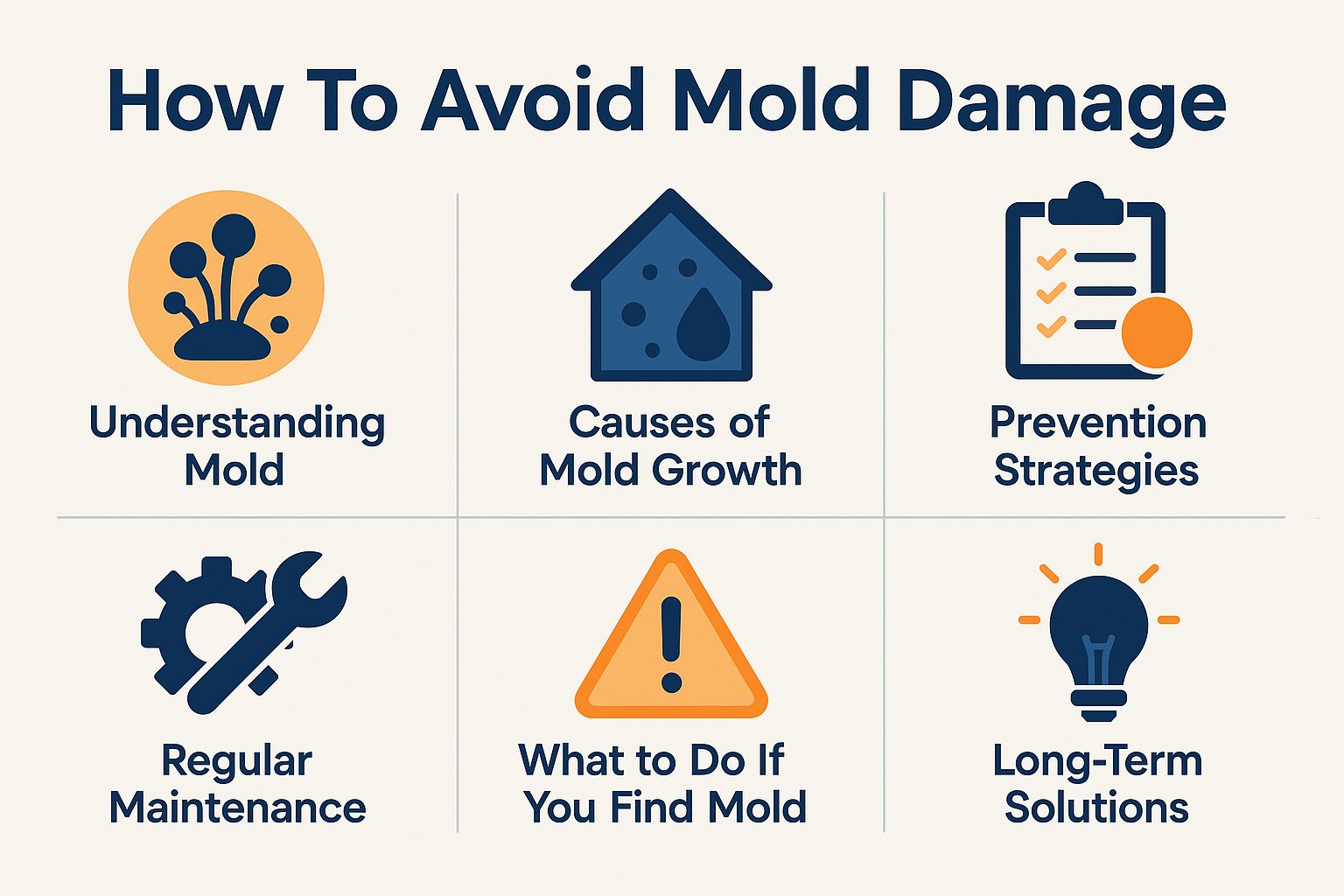
Mold can infiltrate homes unnoticed, leading to potential health hazards and costly repairs. Understanding how to prevent mold damage is crucial for maintaining a safe and healthy living environment. This article will explore the nature of mold, its common causes, and effective prevention strategies. Additionally, we will discuss essential maintenance practices and what to do if mold is discovered. Equip yourself with the knowledge to safeguard your home against this pervasive threat.
Understanding Mold
A comprehensive understanding of mold is essential for maintaining a healthy indoor environment, as it can pose significant health risks and adversely affect property value.
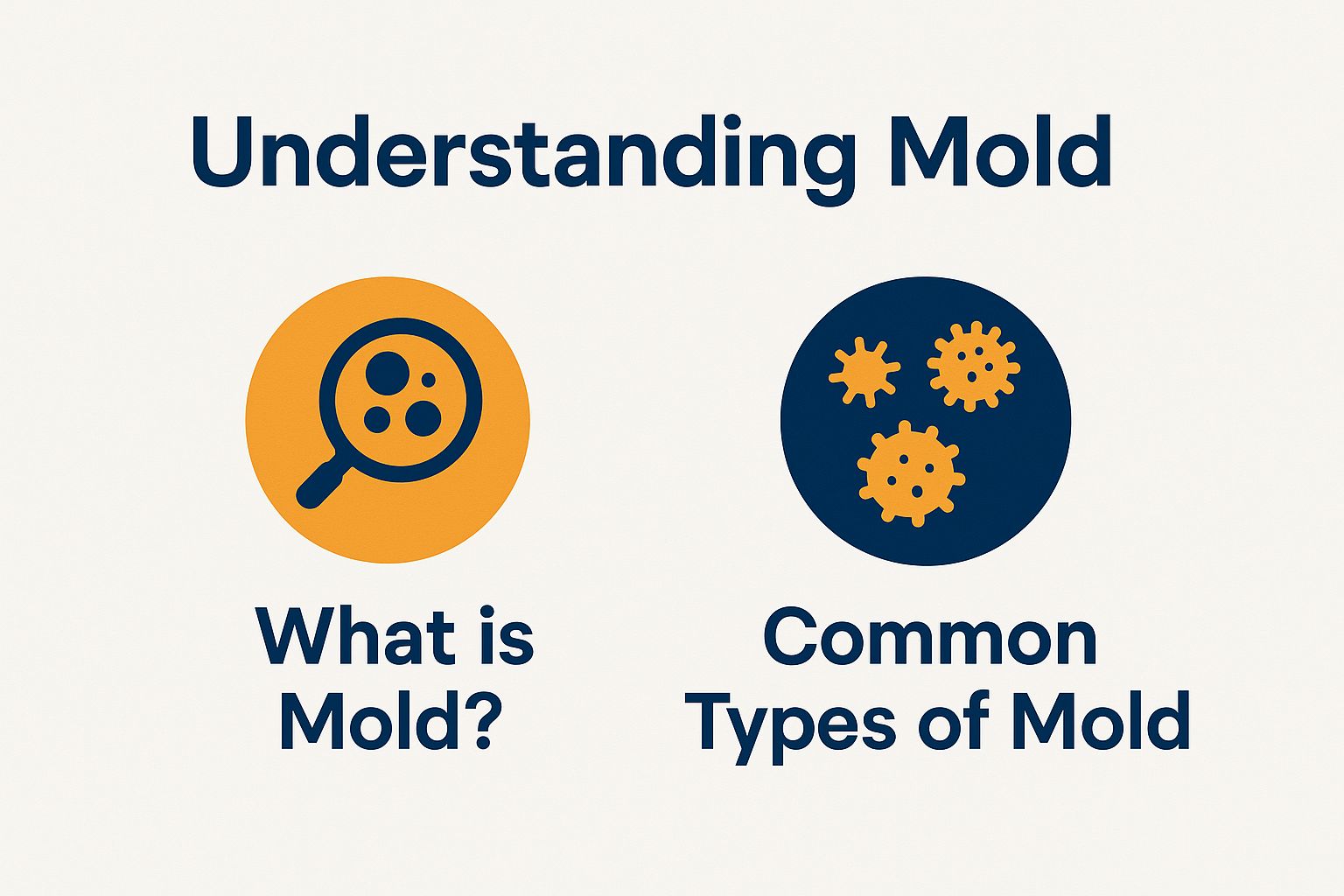
What is Mold?
Mold is a type of fungus that flourishes in damp environments and can reproduce through airborne spores, which may lead to various respiratory issues and contribute to indoor air quality concerns.
Exposure to mold can result in serious health complications, particularly for individuals with asthma or allergies. Common symptoms associated with mold exposure include coughing, sneezing, and skin irritation, emphasizing the need for regular inspections and proper air circulation.
To mitigate these risks, it is advisable to utilize dehumidifiers to maintain indoor humidity levels below 50%. Regular inspections of areas susceptible to dampness, such as bathrooms and basements, are essential, and any leaks or water damage should be addressed promptly using proper plumbing and construction techniques.
Testing kits, such as the Mold Test Kit ($30), can assist in identifying problematic mold types within the home, facilitating targeted remediation efforts.
Common Types of Mold
Common types of mold include Aspergillus, Cladosporium, and Stachybotrys (commonly referred to as black mold), each presenting distinct health risks and necessitating specific remediation strategies.
Aspergillus typically manifests in shades of green, yellow, or black and is frequently found in damp areas such as basements or bathrooms. Exposure to this mold can result in respiratory issues.
Cladosporium is predominantly found outdoors but can also be present within residential environments. This mold usually exhibits an olive green or black coloration and may trigger allergic reactions.
Stachybotrys, identifiable by its dark green or black hue, flourishes in water-damaged areas and is particularly infamous for causing severe health complications, including chronic respiratory conditions.
Effective mold remediation strategies vary and may include the use of HEPA filters and the enhancement of ventilation in affected areas.
You should hire a Miami mold removal company for help if you need mold removed. A great resource is Precision Mold Removal of Miami…
Causes of Mold Growth
Identifying the sources of moisture and understanding the environmental factors are crucial for preventing mold growth in residential spaces.
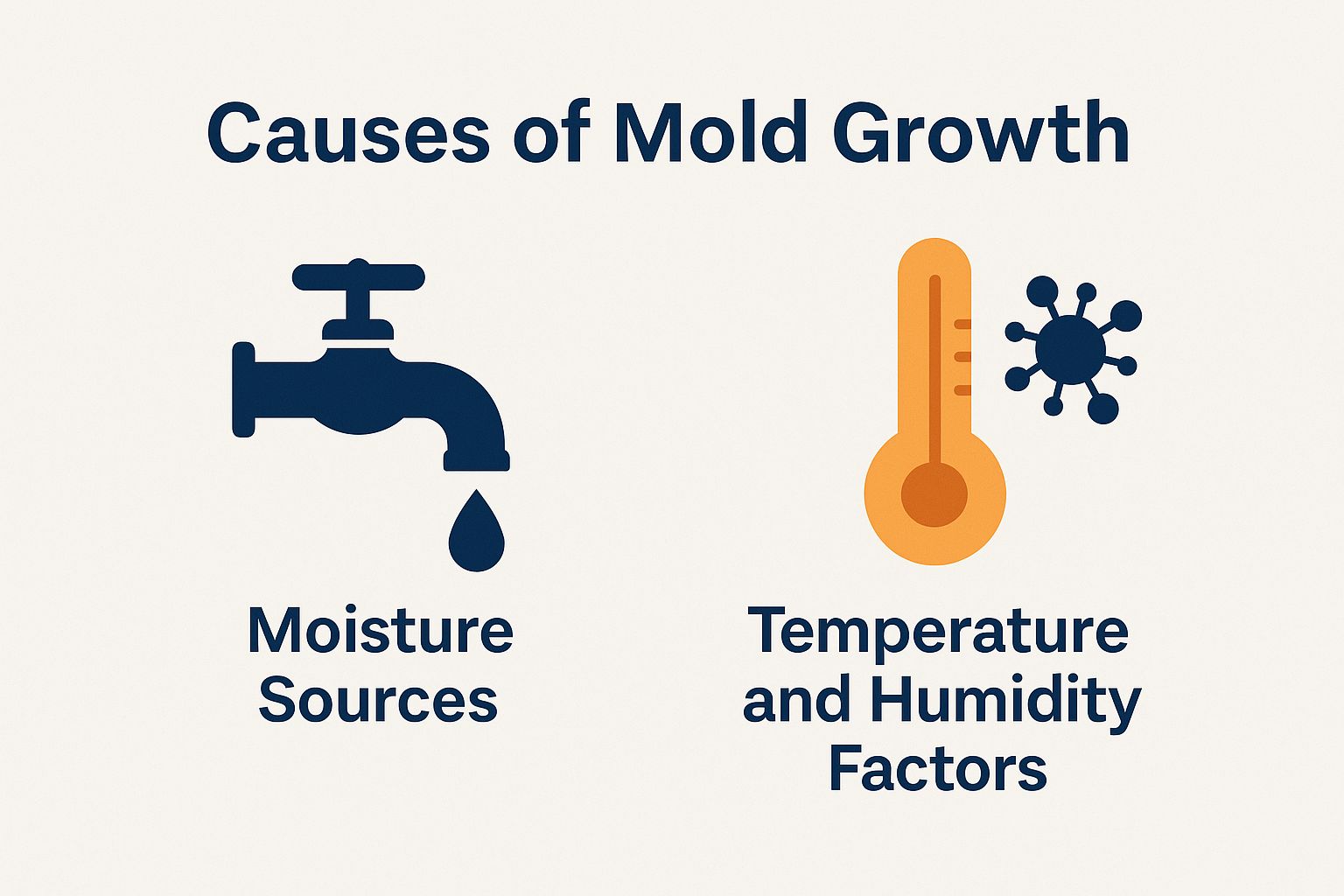
Moisture Sources
Moisture sources, such as leaks, condensation, and inadequate drainage, account for approximately 80% of mold growth in residential properties, making it essential to address these issues.
To effectively manage moisture levels, it is important to inspect common problem areas, including bathrooms, kitchens, and basements.
- Utilizing a moisture meter, such as the Extech MO55 (priced at $45), can assist in identifying hidden sources of moisture behind walls or beneath sinks.
- It is also imperative to ensure proper drainage around the property by inspecting gutters and downspouts to confirm that they direct water away from the foundation.
Additionally, employing a dehumidifier can be beneficial in areas prone to dampness. Regular maintenance, which includes sealing cracks and promptly repairing leaks, is vital in preventing mold growth.
Temperature and Humidity Factors
Maintaining indoor humidity levels between 30-50% and regulating temperatures can significantly diminish the potential for mold growth.
To effectively monitor and manage these conditions, it is advisable to utilize a hygrometer, such as the AcuRite 00613, which is available for approximately $20. This device provides accurate measurements of both humidity and temperature.
Should the humidity levels exceed the recommended range, it may be necessary to employ a dehumidifier or air conditioner to mitigate excess moisture. Additionally, regular ventilation of spaces is essential. This can be accomplished by opening windows or utilizing exhaust fans, particularly in areas prone to high moisture, such as kitchens and bathrooms.
Implementing these proactive measures will contribute to maintaining a mold-free environment.
Prevention Strategies
Implementing effective prevention strategies, including the application of sealants and mold-resistant building materials, is crucial for maintaining a mold-free environment and ensuring the integrity of your home is preserved.
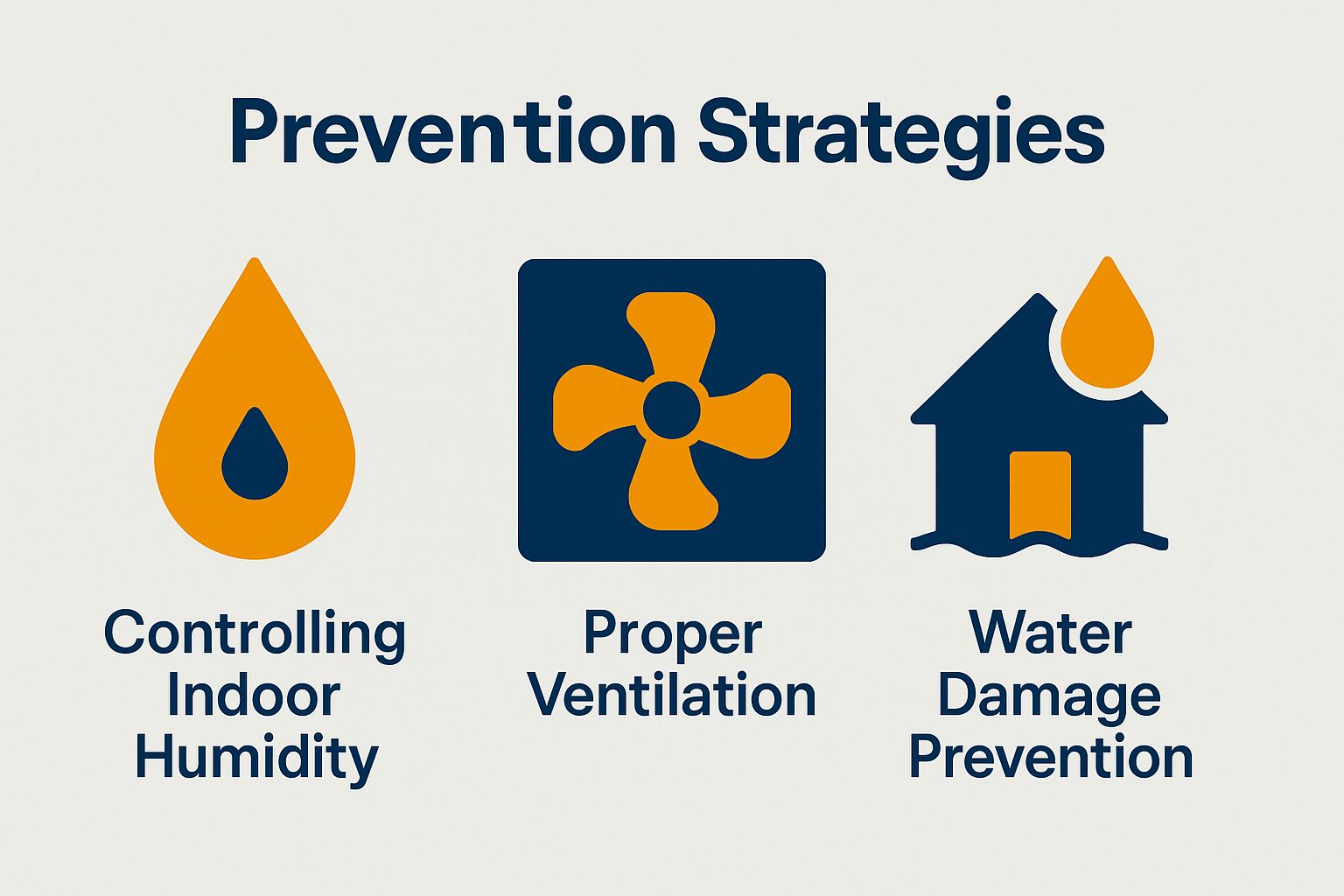
Controlling Indoor Humidity
Utilizing dehumidifiers can effectively reduce indoor humidity levels by 30% to 50%, thereby significantly inhibiting mold growth in susceptible areas.
To optimize the performance of a dehumidifier, it is advisable to select models such as the hOmeLabs 70 Pint, which is priced at $250, or the Frigidaire 70 Pint, available for $280.
Proper setup is crucial; the unit should be placed in central locations with adequate air circulation. Additionally, pairing the dehumidifier with ceiling fans can enhance airflow and facilitate the distribution of drier air throughout the room.
Regular inspection and cleaning of filters are necessary to maintain operational efficiency. It is also beneficial to use the dehumidifier in conjunction with a ventilation system to expel moisture-laden air.
Consistent monitoring of humidity levels using a hygrometer is recommended to assess the effectiveness of the dehumidification process.
Proper Ventilation
Proper ventilation is essential for reducing humidity levels and preventing mold growth by promoting air circulation and minimizing dampness. Several types of ventilation systems, adhering to building codes and incorporating climate control, can significantly enhance airflow within a residence.
Exhaust fans are particularly effective in localized areas such as kitchens and bathrooms, with installation costs typically ranging from $100 to $300.
Attic vents, including ridge and gable vents, facilitate the escape of heat and are often suitable for DIY installation, generally costing between $200 and $500.
To ensure optimal performance, it is important to conduct regular maintenance, which includes cleaning fans and checking for blockages in vents. Assessing the specific needs of your home will aid in determining the most effective solutions for humidity control and air quality improvement.
Water Damage Prevention
Implementing effective water damage prevention measures, including proper drainage and waterproofing, can significantly reduce the risk of mold by up to 80%, thereby ensuring a safe home environment.
It is advisable to schedule regular plumbing inspections to identify and address leaks promptly. For residences located in flood-prone areas, the installation of a sump pump, such as the Zoeller M53, which is priced at approximately $200, is recommended.
Maintaining clear gutters and ensuring that downspouts direct water away from the foundation is crucial in preventing water accumulation. Additionally, seasonal inspections of the roof and basement for signs of moisture or leaks are essential for maintaining a dry environment.
Investing in a dehumidifier during humid months can help keep indoor humidity levels below 60%, further mitigating the risk of mold growth.
Regular Maintenance
Regular maintenance and inspections are crucial in preventing mold-related issues from developing into more serious problems. This proactive approach not only safeguards the health of individuals but also helps protect the overall value of the property.
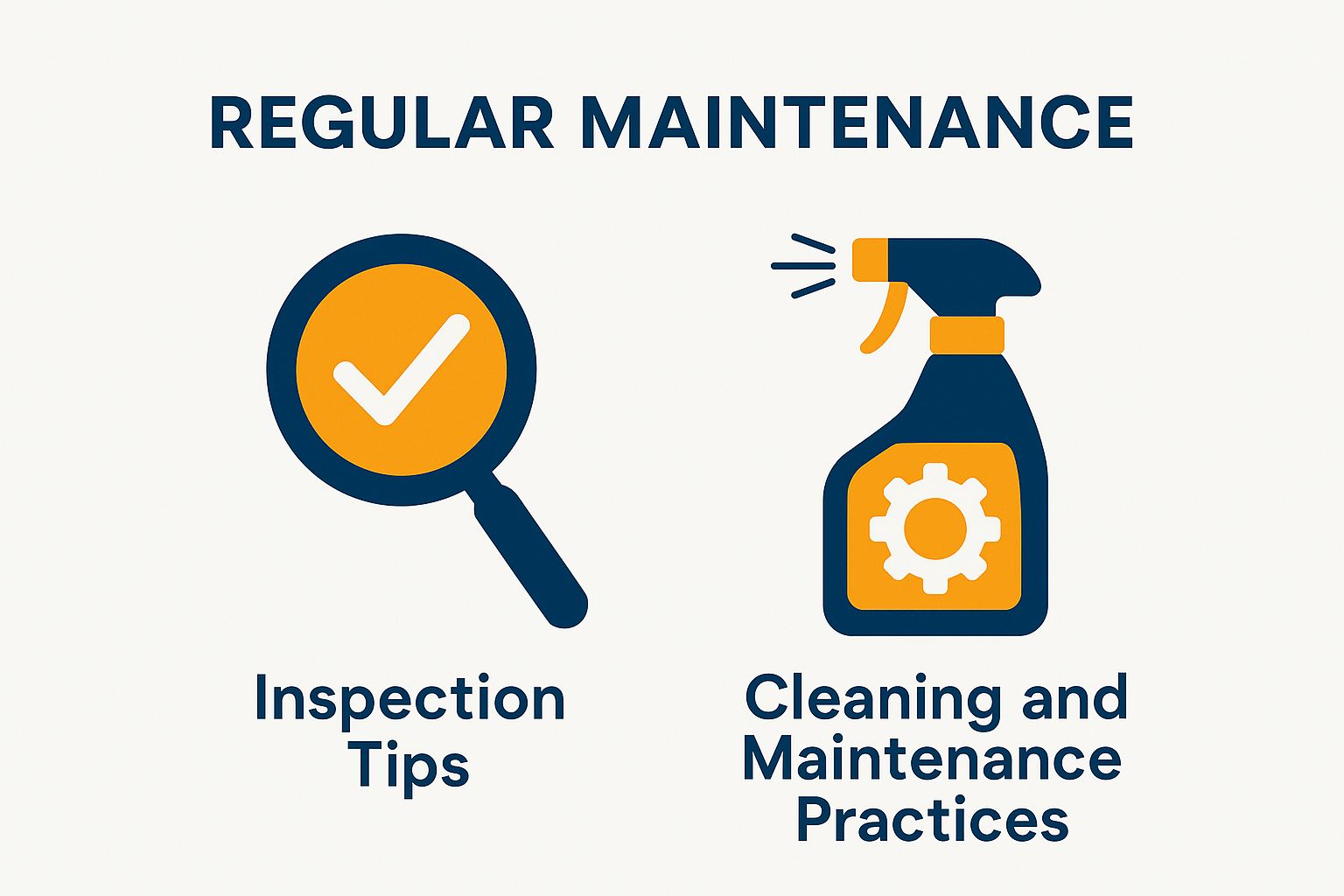
Inspection Tips
Conducting comprehensive inspections every six months is essential for the early detection of mold growth, allowing for timely intervention and remediation.
To carry out effective inspections, it is advisable to utilize tools such as an infrared thermometer, for instance, the FLIR One ($200), which can identify temperature anomalies that may indicate moisture within walls. Additionally, investing in a moisture meter, such as the General Tools MMD7NP ($28), will enable the measurement of moisture levels in wood and drywall.
Attention should be directed to key areas, including:
- Checking attics and basements for leaks.
- Inspecting around windows and doors for signs of condensation.
- Monitoring ventilation systems to reduce humidity levels.
By adhering to this proactive approach, one can significantly minimize the risks associated with mold and foster a healthier environment.
Cleaning and Maintenance Practices
Utilizing mold-resistant cleaning solutions can significantly enhance cleaning effectiveness, with the potential to reduce mold spores by up to 95%. To optimize results, it is advisable to employ a combination of vinegar, hydrogen peroxide, and baking soda.
The acidity of vinegar aids in breaking down mold at a molecular level and can be applied directly to affected surfaces. Hydrogen peroxide serves as an effective antifungal agent; it should be applied using a spray bottle at a 3% concentration and allowed to sit for 10 minutes before being wiped away. For persistent stains, a paste created from baking soda and water can be scrubbed onto the affected area.
It is also essential to establish a regular cleaning schedule, with particular attention given to high-humidity areas such as bathrooms and kitchens, to prevent the recurrence of mold.
What to Do If You Find Mold
Timely intervention is crucial upon the discovery of mold; understanding the appropriate steps can significantly reduce health risks and mitigate property damage.
Assessment and Removal Options
Assessing the extent of a mold problem is essential; small patches can often be addressed through DIY solutions in home maintenance, whereas larger infestations may necessitate professional remediation.
For minor areas (less than 10 square feet), individuals may utilize DIY kits such as Mold Armor ($30) or RMR-86, which come equipped with cleaning agents like a spray and scrubbing pad for effective mold removal. It is important to wear protective gear, including gloves and masks, during this process, following safety measures and guidelines.
For areas exceeding 10 square feet, it is advisable to engage professional services that employ advanced techniques and equipment for mold remediation. Recommended methods for effective removal include containment and surfaces treatment:
- Soda blasting for challenging spots as part of thorough inspections
- HEPA vacuums for thorough clearance, particularly around HVAC systems and household items
This approach ensures that the environment remains mold-free and safe.
When to Call Professionals
If mold covers an area larger than 10 square feet, or if individuals in the residence are experiencing health issues due to toxic mold and mildew, it is essential to engage professional services for safe and effective removal.
It is important to consider the types of mold present, particularly toxic varieties such as black mold, which can pose significant health risks and impact insurance claims. Symptoms in residents, such as respiratory issues, allergic reactions, or persistent headaches, should be closely monitored.
Utilizing tools such as mold test kits, available for $10 to $50, can assist in mold testing and identifying the types of mold present prior to remediation efforts. Additionally, professionals frequently employ specialized equipment, including air scrubbers and HEPA vacuums, to ensure thorough and effective removal of mold and other microbial growth.
Ultimately, if there is any uncertainty regarding the severity or type of mold, consulting with an environmental health expert can provide valuable guidance on environmental control and peace of mind.
Long-Term Solutions
Long-term solutions for mold prevention require the implementation of strategic home improvements that enhance structural integrity and effectively manage moisture control through preventative measures and awareness.
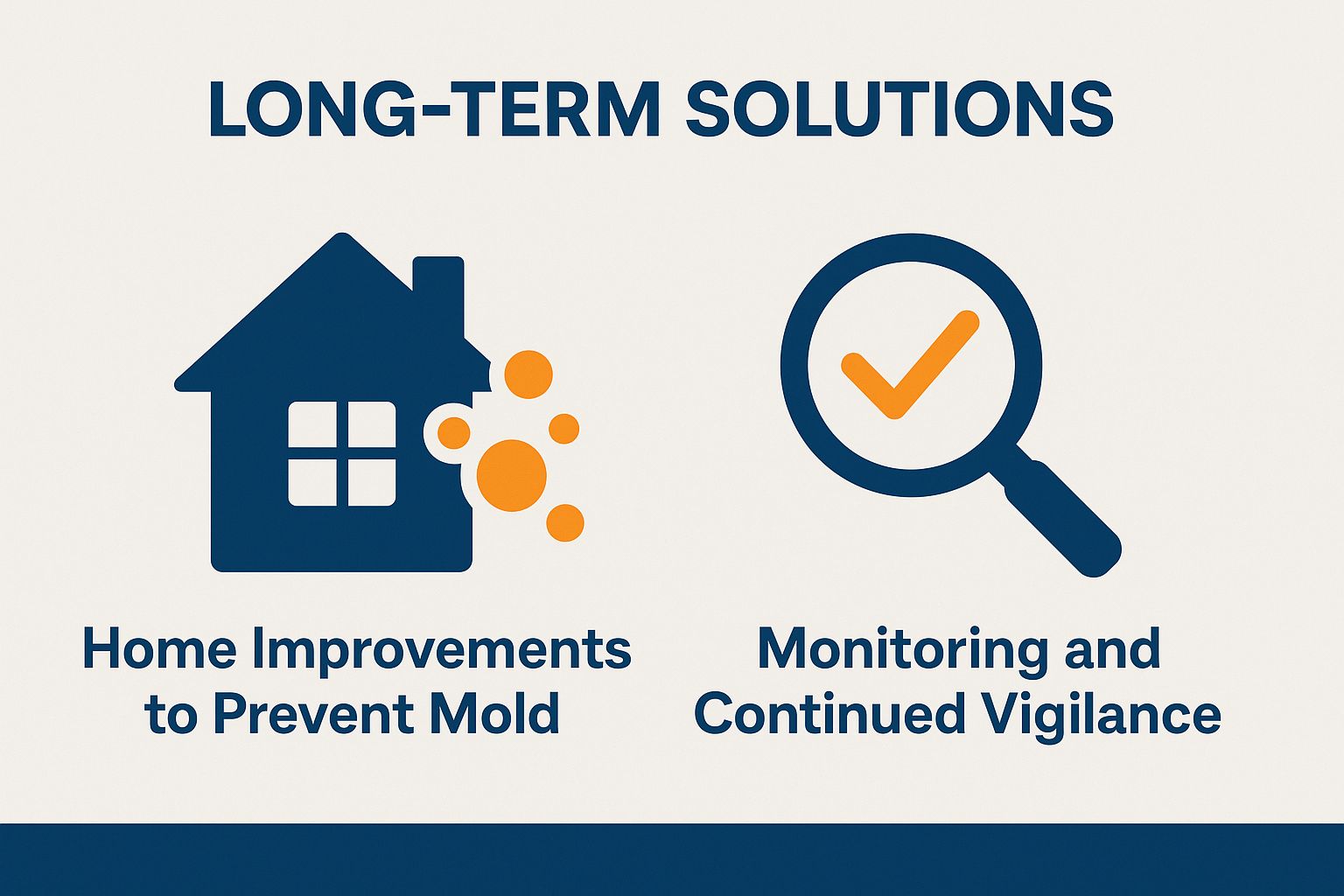
Home Improvements to Prevent Mold
Upgrading to mold-resistant building materials and incorporating waterproofing measures as moisture barriers can reduce the risk of mold by more than 50%.
It is advisable to consider the use of mold-resistant drywall, which typically costs around $15 per panel and is specifically designed to resist moisture. When paired with a high-quality waterproofing sealant, such as Drylok (approximately $25 per gallon), this combination creates a robust barrier against dampness, enhancing the property’s interior conditions.
Additionally, installing advanced drainage systems, such as a French drain, provides another layer of protection as part of building design. The cost for professional installation may range from $1,000 to $2,500, depending on the size of the property, ensuring that water sources are effectively redirected away from the foundation.
Together, these measures can significantly mitigate fungal growth and mold growth within residential properties, promoting improved property management.
Monitoring and Continued Vigilance
Continual monitoring of humidity levels through the use of sensors can provide homeowners with early alerts regarding potential mold growth, allowing for timely intervention and seasonal maintenance before it becomes a significant issue.
To effectively manage humidity and address risk factors, it is advisable to utilize tools such as the Eve Room ($99), which offers real-time readings and sends notifications directly to your smartphone.
Establishing a regular monitoring schedule is essential; it is recommended to check humidity levels at least twice a week, particularly in areas prone to dampness, such as basements or kitchens. This practice should be complemented by routine inspections for visible signs of mold or water damage, adhering to health guidelines and building inspections.
Additionally, utilizing a dehumidifier during high-humidity months can aid in maintaining optimal humidity levels, ideally between 30% and 50%, thereby further reducing the risk of mold growth and improving containment strategies.